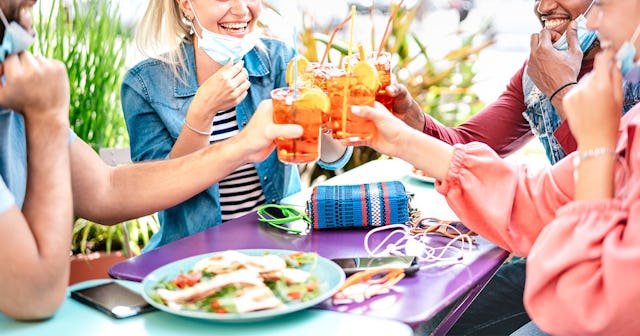Adults With COVID About 'Twice As Likely' To Say They've Dined At A Restaurant

A new study shows more clearly the link between positive COVID infections and eating at restaurants
Despite being roughly half a year into this pandemic, there’s still a lot we have to learn about how it spreads, how it’s transmitted, and what activities are OK or higher risk. Scientists are working hard to answer some of those questions, and a new study is showing a more tangible link than ever between positive tests for COVID-19 and eating out at restaurants.
The study, done and released by the CDC, showed that adults who tested positive for COVID-19 were approximately twice as likely as those who tested negative to report to researchers that they had eaten at a restaurant within 14 days before testing positive.
“In addition to dining at a restaurant, case-patients were more likely to report going to a bar/coffee shop, but only when the analysis was restricted to participants without close contact with persons with known COVID-19 before illness onset,” the researchers wrote.
The study followed 314 who were tested for COVID-19 in July across 10 states: California, Colorado, Maryland, Massachusetts, Minnesota, North Carolina, Ohio, Tennessee, Utah and Washington. 154 of them tested positive, and 160 tested negative. After their tests, they were asked questions about their behavior, including whether they typically wear masks, and what kinds of activities they take part in around their communities, like whether they go to bars, hang out with friends, go to the gym, or eat at restaurants.
Most of those who tested positive reported having close contact with someone else who had tested positive, usually a family member. But those who tested positive for COVID and didn’t have direct contact with another infected person were twice as likely to say they had eaten at a restaurant within 14 days before getting sick.
Now for the good news: There was virtually no difference between the numbers people who tested positive and people who tested negative who reported doing activities like shopping, gathering with fewer than 10 people in a home, going to an office, going to a gym, going to a salon, using public transportation or attending religious gatherings. Researchers think that’s because it’s easier to wear a mask while doing all of those activities, while eating and drinking require removing your mask.
“Reports of exposures in restaurants have been linked to air circulation. Direction, ventilation, and intensity of airflow might affect virus transmission, even if social distancing measures and mask use are implemented according to current guidance,” the researchers wrote. “Masks cannot be effectively worn while eating and drinking, whereas shopping and numerous other indoor activities do not preclude mask use.”